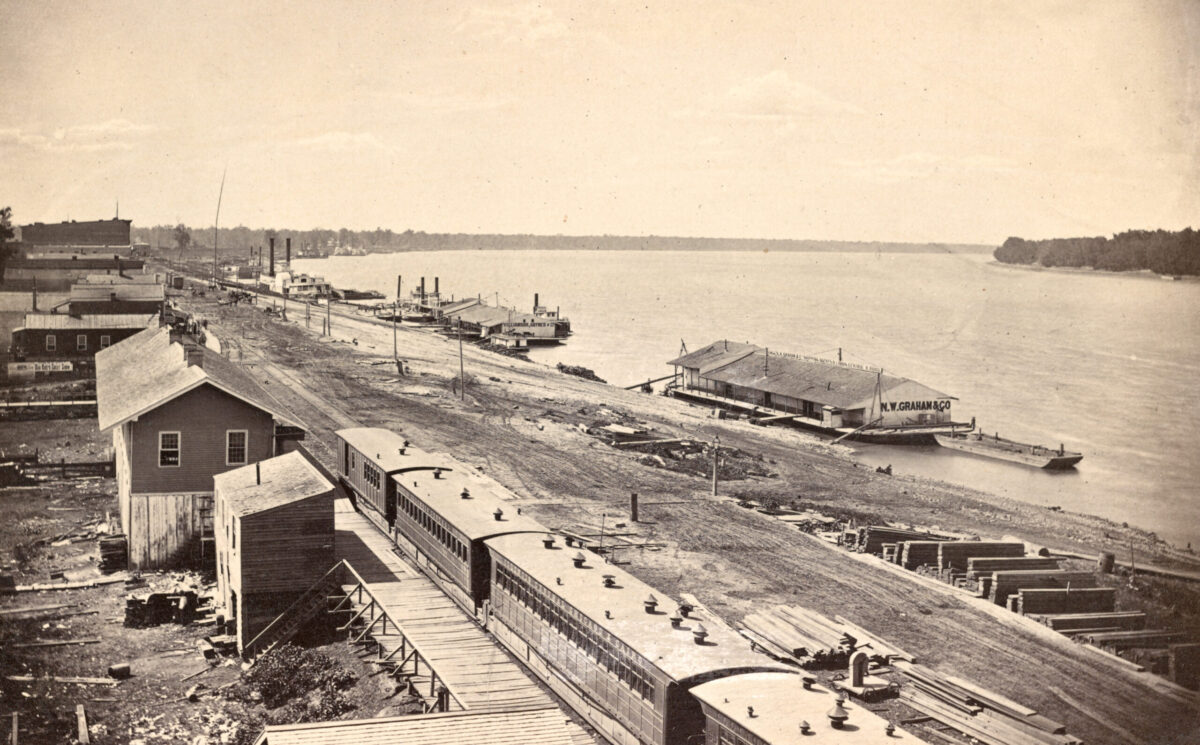In the anxious days that followed the fall of Fort Sumter in April 1861, Illinois Governor Richard Yates worried in particular about a disease-ridden little town jutting into the confluence of the Ohio and Mississippi rivers.
Flood-prone Cairo (pronounced “Kay-row”), located at the far southern end of Illinois in a region of the state nicknamed “Egypt,” didn’t amount to much. After a visit in 1842, famed author Charles Dickens called it a “destestable morass,” a “breeding-place of fever, ague, and death.” A mere 242 hardy souls called Cairo home at the beginning of 1850. The arrival of the Illinois Central Railroad in 1856, connecting Cairo to Springfield and Chicago, improved the little town’s prospects, but it was still a flyspeck compared to the prominent nearby river cities of Cincinnati, Louisville, and St. Louis. The 1860 Census listed Cairo’s population at 2,188 (2,141 White residents, 47 African American).
Cairo’s days as a sleepy, stunted port city ended the moment Confederate cannons opened fire in Charleston Harbor. War meant that the little community flanked by the Ohio and Mississippi suddenly assumed enormous strategic importance. Not wanting Cairo to fall into Rebel hands, the Kentucky-born Yates, an ardent Unionist and friend of President Abraham Lincoln, looked to the other end of the state for help.
On April 19, the Illinois governor ordered Brig. Gen. R.K. Swift, commander of a Chicago militia brigade, to “have as strong a force as you can” ready to deploy “at a moment’s warning.” A messenger who arrived the next day from Yates in Springfield stressed that its destination “must be kept a profound secret,” Augustus Harris Burley, chairman of a pro-Union Chicago citizens committee, wrote in 1890.
Six hundred ill-armed volunteers equipped with squirrel guns, antique pistols, and muskets obtained from a Milwaukee armory boarded a train at the Illinois Central terminal in Chicago on April 21. At 11 p.m., amid cheers and the sound of screeching steam whistles, the train departed with the well-wishers waving goodbye and its mission a mystery to the troops onboard.
Secrecy was essential. Organizers of the expedition “were surrounded by traitors in Chicago, and a large proportion of the people in Southern Illinois sympathized with the South,” Burley wrote. A lengthy wooden railroad trestle spanning the Big Muddy River in southern Illinois offered an inviting target for saboteurs. “There was also fear that the rebels would seize Cairo, being a point of great strategic importance.”
Illinois Central and telegraph officials acted to ensure stealth while the troop train was en route. Telegraph lines went quiet while the railroad permitted a regularly scheduled 7 p.m. train to leave Chicago with orders to pull over to make way for the troop transport. To all appearances, operations along the line seemed normal. “With this arrangement,” Burley wrote, “the military train passed unheralded the length of the State, and rolled into Cairo to the astonishment of all and the rage of many of its citizens.”
The transformation of tiny Cairo into an unlikely citadel of Union military operations in the West had begun.
The “Western Flotilla”
As Governor Yates acted to secure the strategic town, war planners in Washington, D.C., eyed Cairo’s strategic position along the Mississippi. In a letter to Secretary of the Navy Gideon Welles written in late April, St. Louis engineer James B. Eads proposed making Cairo the linchpin of a river blockade that would interrupt Confederate commerce. Eads’ missive set the wheels in motion turning Cairo into an inland naval base.
On May 16, Welles named naval Commander John Rodgers to oversee the establishment of an armed blockade of the Mississippi. Four days later, he ordered Navy Constructor Samuel M. Pook to leave Washington for Cairo, where he was to report to Rodgers “for special duty under his direction.” Shuttling between Cairo, Mound City, Ill., and Carondolet, Mo., Rodgers and Pook designed and outfitted seven flat-bottomed, iron-armored gunboats for the Union’s “Western Flotilla” to navigate the Mississippi and other inland rivers and pound Confederate positions along the waterways.

A month after the Chicago troops arrived in Cairo, the woebegone river port bustled with activity. A report in The New York Herald detailed newly constructed artillery batteries along the Mississippi, barracks, and hospitals. Union sympathizers fleeing western Kentucky poured across the river in search of safety. “The town is full of strangers and newspaper correspondents are almost as plentiful as soldiers,” the Herald correspondent reported. Major General George B. McClellan, on an inspection visit in June, praised the ardor of Illinois troops and promised they would lead the way when Union forces moved south.
By the end of June, 3,000 Union troops garrisoned Fort Defiance at the tip of the peninsula, part of a force between Cairo and Bird’s Point, Mo., estimated at 8,000.
Nevertheless, doubts about the security of Cairo lingered. The hostility encountered by the Chicago troops when they arrived reflected pro-Southern sympathies that remained pronounced even after the fall of Fort Sumter. With some residents of Egypt enlisting with the Confederates and nightriders crossing the countryside to disparage the Union, guards were posted at railroad bridges as though Illinois were a border slave state, Ulysses S. Grant recalled. John Logan, the region’s immensely popular Democratic congressman, worked to rally Egypt to the Union cause and soon became a Union general and outspoken Radical Republican. Sympathy for the South remained, however, sometimes taking on menacing form. In late June, Harper’s Weekly reported from Cairo about the capture of “an organized band of rebels” by Union Brig. Gen. Benjamin Prentiss. Of the 20 seized by Prentiss’ troops, only three agreed to swear loyalty to the Union. The rest dug ditches until they could be tried for treason in St. Louis.
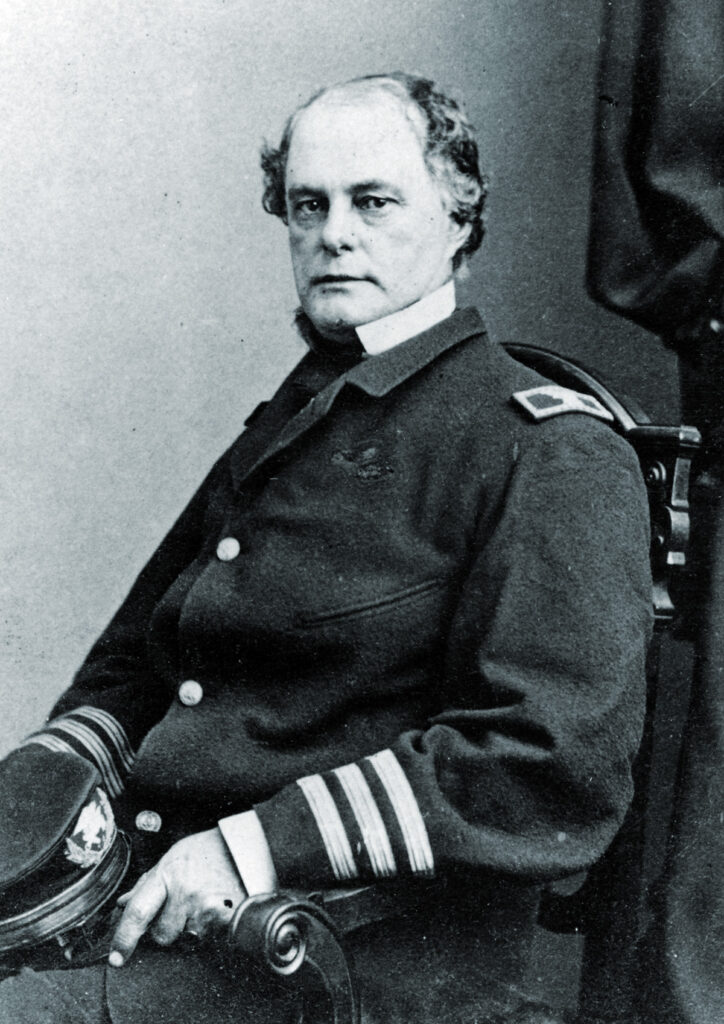
Residents who kept a close eye on river traffic worried that steamboats were being blockaded by Confederates to keep Union troops in the dark about a pending attack. Major General John C. Frémont, the Western explorer and 1856 Republican presidential candidate known as “the Pathfinder,” shared those anxieties. Picked in late July to command Union forces in the West, Frémont feared that Confederate Maj. Gen. Gideon J. Pillow was advancing on Cairo with 12,000 troops, later writing, “The waterways and the district around Cairo were of the first importance.”
To meet the threat, Frémont left St. Louis at the end of July for Cairo with 3,800 troops—“all my available force”—billeted on a flotilla of sizable transports to create the impression the force was bigger than it was.
Cairo presented a sobering sight to the Pathfinder. “I found the garrison demoralized,” he recalled. “From the chief of artillery I learned there were only about six hundred effective men under arms,” and their enlistments had expired. “The reinforcement I brought, and such assurances as I was able to give, restored confidence,” Frémont wrote, “and I was able to prevail on one of the garrison regiments to remain.” The maneuver deterred Pillow from attacking and put Cairo “effectually beyond the reach of the enemy” for the duration of the war, according to Frémont.
Another foe posed a more persistent threat. The fetid conditions described by Dickens proved a fertile breeding ground for disease. “A more fearful enemy than diarrhea, or even than a hostile force, has appeared in the form of typhoid fever!” the Chicago Tribune breathlessly reported in early June. Frémont, who considered Cairo “the most unhealthy post within my command,” turned one of the largest steamboats from his convoy into a floating hospital where some of the injured benefited from shade, refreshing breezes, and improved drainage. The battle to keep Cairo’s unhealthy environment from sickening Union troops would last for the remainder of the war.
Base of Operations
Despite the challenging conditions, new arrivals kept pouring in. On August 12, a trio of commercial paddle-wheel steamboats—Tyler, Conestoga, and Lexington—outfitted for combat in Cincinnati docked at Cairo. At the end of August, pious and hard-working Navy Captain Andrew Hull Foote succeeded Rodgers and assumed command of naval operations on the Mississippi and nearby rivers. Grant, a brigadier general, moved to Cairo on September 4 and set up his headquarters at Cairo’s St. Charles Hotel. He wasted little time taking the battle to the enemy.
A day after coming to town, Grant loaded two regiments and an artillery battery into steamboats and sailed to Paducah, Ky., seizing the town and forestalling a Confederate advance. On November 7, relying on a convoy of steamboats and gunboats to move his troops, Grant inflicted heavy losses on Confederate forces at Belmont, Mo., before withdrawing. Cairo was evolving from a heavily defended strategic point into a base of operations against the Rebels.
As Grant battled Confederates, he confronted an enemy behind the front lines with which he was personally acquainted. Cairo’s ample quantities of alcohol threatened to corrode discipline in the ranks. Whiskey “was as plentiful as the yellow flood of the river,” New York Times correspondent Franc B. Wilkie recalled. It “overflowed everything, filled everything, pervaded everything, like an irrepressible inundation.”
Responding to reports that officers and enlisted men “quarrel, curse, drink, and carouse generally on the lowest level of equality” in Cairo’s saloons and dance halls, Grant ordered that such fraternization cease. “Such conduct is totally subversive of good order and discipline, and must be discontinued,” he declared.
“It is hoped,” the Tribune’s Cairo correspondent sniffed, “we shall have no more lazy, drunken officers lounging about the St. Charles, and what is even worse, visiting the lowest dens in the city.” The campaign against ennui-induced boozing continued into the fall. The Missouri Republican reported in late October that a crackdown on drunkenness in the ranks was working, but intoxicated soldiers were still “frequently seen,” noting, “Not a day passes but that sundry barrels, kegs, and bottles of rot gut, kill devil, or chain lightning, are summarily destroyed and their contents deposited in the gutter.”
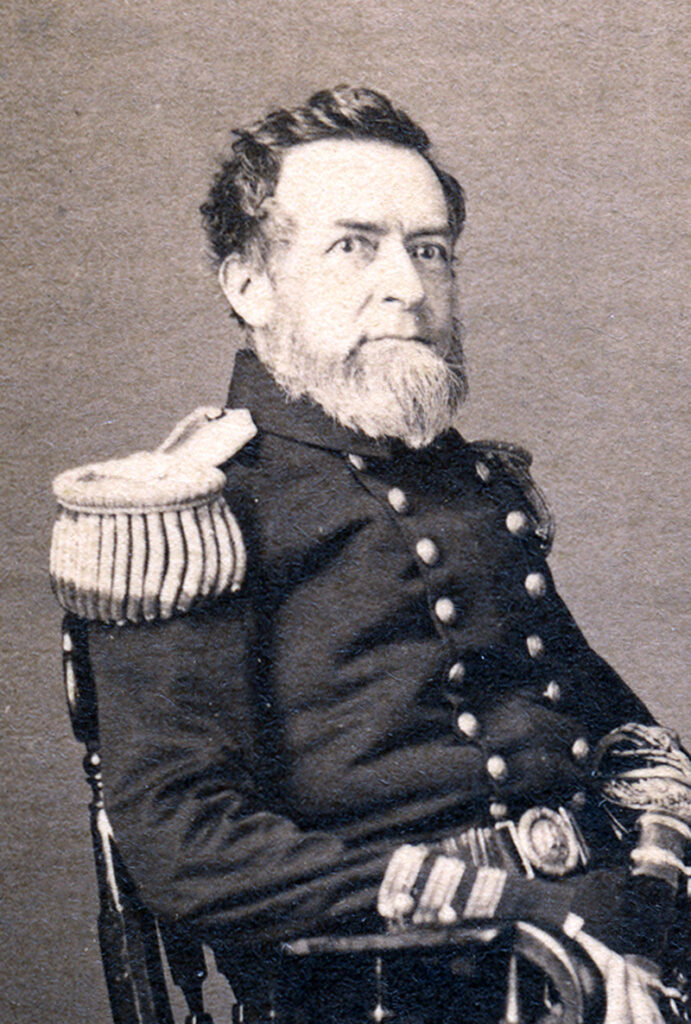
While Grant drilled and disciplined his troops, Foote, now a flag-officer whose naval rank made him the equivalent of a major general, worked to get his gunboats ready for action. “He was personally very active, and could be seen at all times, either at his office in a wharf-boat at Cairo, or on one of the iron-clad boats of that day, superintending the equipment and armament of his flotilla,” Brig. Gen. William Tecumseh Sherman remembered. The once-sleepy riverfront hummed with activity as gunboats and tugboats crowded wharves and channels and workers filled the air with the “sound of hammer and chisel and saw.”
Outwardly, according to Sherman, Foote exuded “frankness and heartiness.” Privately, the hard-working naval officer admitted he was dismayed by Cairo’s makeshift facilities and a meddlesome inspection board of Army and Navy officers reviewing the arming of the gunboats. “Weary days are my lot,” he wrote his wife in December. “If I could be fitted out at a navy yard I would not care; but this fitting out vessels where no one knows anything is discouraging.”
But Foote persevered. Work on the gunboats continued into January, and they were finally certified as ready for combat in the middle of the month. The vessels would be put to immediate use. At the end of January, Grant and Foote saw an opportunity to move south.
On February 2, the first of 17,000 Union troops, accompanied by seven of Foote’s gunboats, left Cairo bound for Fort Henry on the Tennessee River just south of the Kentucky border. Four days later, Foote reported to Secretary Welles that his seven gunboats captured the Confederate stronghold and its commander, Brig. Gen. Lloyd Tilghman, after a “severe and rapid fire.” One of the Union boats, Essex, suffered a direct hit on its boiler that scalded 29 sailors, killing one, but Foote was in all pleased by the performance of his squadron.
“The steamers were admirably handled by their commanders and officers,” Foote informed Welles. “In fact, all the officers and men gallantly performed their duty, and, considering the little experience they have under fire, far more than realized my expectations.” The assault on Fort Henry opened Grant’s push south from Cairo. Fort Donelson, guarding the Cumberland River, fell soon thereafter. In April, Union forces led by Grant rallied following a surprise morning attack to record a monumental victory at Shiloh in southeastern Tennessee. Finally, in July 1863, the last remaining Confederate strongholds on the Mississippi—Vicksburg and Port Hudson—surrendered following extended sieges. Foote, however, did not live to see the Union triumphs. He died suddenly in New York on June 26, a week before the Rebels capitulated at Vicksburg.
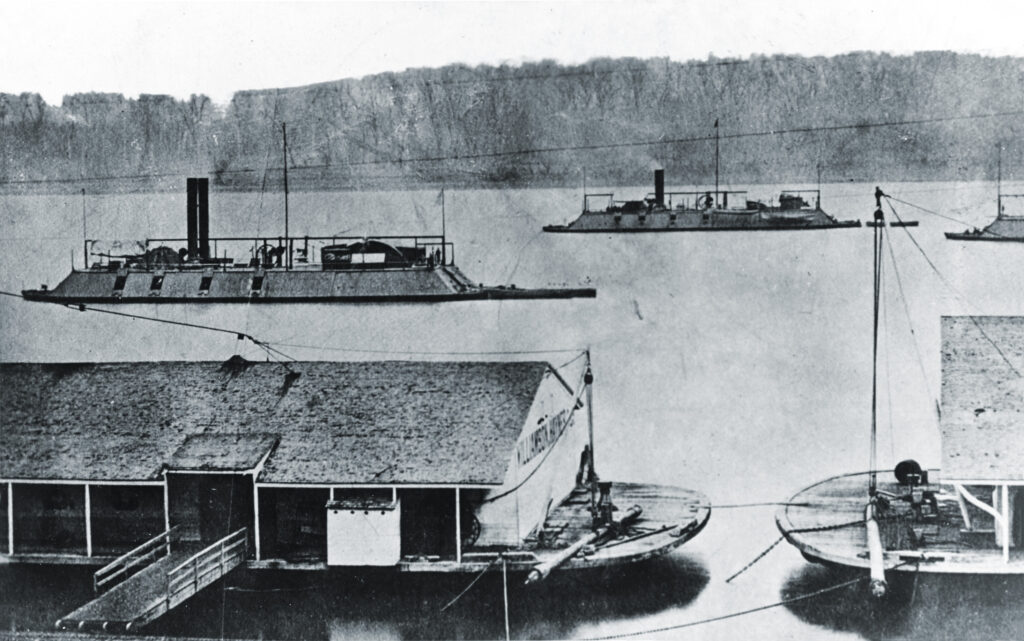
Cairo became an embarkation point for Union troops heading south to join Grant’s advance. Bound for Rienzi, Miss., with his Wisconsin artillery regiment in 1862, Private Jenkin Lloyd Jones arrived in Cairo in the predawn hours of August 30. “We were astir early to catch sight of the far-famed city,” he wrote in his diary, “and certainly, an unhappy surprise we found it; the combined medley of filth and disorder, the streets rough, the sidewalks torn and tattered, rendering it dangerous to travel, lest they should throw one headlong to the ditch.”
Jones’ observations matched those of other Cairo visitors. The Union buildup had done little to improve conditions. A day after Grant and Foote departed Cairo for Fort Henry, British author Anthony Trollope, touring the country for a book on the United States, arrived in Cairo. Like Dickens 20 years earlier, Trollope had little good to say about what he saw. Disease was prevalent. The city was populated by adults with “lantern faces like spectres” whose children appeared “prematurely old.” Empty carts pulled by “floundering horses” struggled to navigate the viscous mud that overflowed in the streets. After two days, Trollope had seen enough. “To whatever period of life my days may be prolonged, I do not think that I shall ever forget Cairo,” Trollope wrote.
George Boutwell arrived in Cairo in the spring of 1862 as part of a commission investigating allegations of corruption involving the quartermaster department at Cairo. Working conditions, the future Republican congressman and treasury secretary found, were less than ideal. Cairo sweltered with nightly thunderstorms offering the only respite from the heat and humidity. Flood waters overtopped the levees and engulfed the streets. “Much of the refuse of the army, including some dead animals, had been left on the surface of the ground,” he wrote. Like Trollope, Boutwell was eager to leave: “Our life at Cairo was disagreeable to an extent that cannot be realized easily.”
While most everyone was happy to leave the squalor and sickness behind, Cairo represented something other than a muddy military outpost for one group of people. As early as the summer of 1861, newspapers reported the presence of escaped enslaved Black people in the Missouri woods opposite Cairo looking to cross the river to freedom. More than a year later, according to The New York Herald, as many as 1,000 once-enslaved Blacks—more than 20 times Cairo’s prewar Black population—inhabited the town. “They are suffering intently for the want of necessary clothing and bedding,” the Herald reported.
Their numbers—and misery—increased as the war continued. In February 1863, an estimated 1,700 crowded into barracks built by the Army, according to The New York Times. Pneumonia and other diseases flourishing in the cramped confines of the barracks claimed scores of lives. “Their quarters are in the midst of mud, always from one to two feet in depth during moist weather.” By some estimates, as many as 3,000 Black migrants passed through Cairo during the war. Many left to work for farmers in southern Illinois or made their way to Chicago.
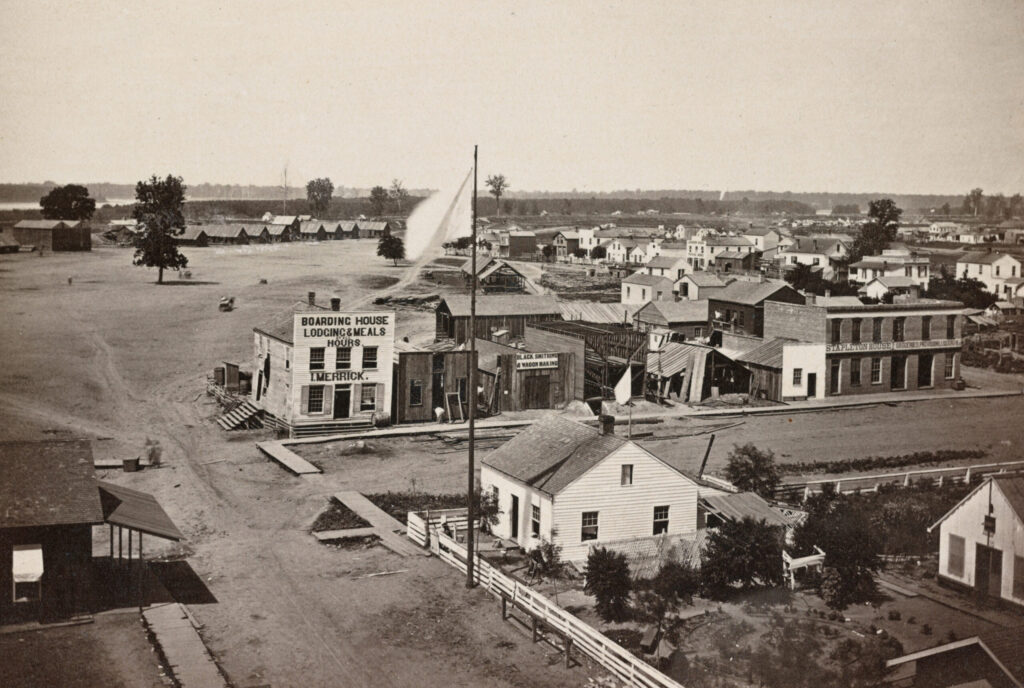
White civilians regarded the influx of formerly enslaved people with horror. In December 1863, Democratic Rep. Joshua Allen, who succeeded Logan as Egypt’s congressman, told the House that his constituents wouldn’t tolerate the presence of the Black refugees. “They are willing to compete with each other, but will never consent to competition with stolen negroes,” Allen said. “Southern Illinois must either be the home of white men or black men—they cannot dwell together.”
Naval officers reacted differently. Struggling with manpower issues, they employed African Americans, both free and formerly enslaved, as gunboat firemen and coal heavers. Writing to Welles from Cairo, Acting Rear Adm. David D. Porter explained that he “reduced expenses” by employing 40 in place of Whites and that he had instructed naval officers down the Mississippi to do likewise.
The war receded from Cairo as Union victories piled up, but danger remained. A raid by Confederate Maj. Gen. Nathan Bedford Forrest into western Kentucky in March 1864 briefly threatened Cairo and its store of ammunition and other provisions but was turned back at Paducah. Cairo’s defenders in blue proved more effective than its champions in Washington.
Three months after Forrest was repulsed, Congress debated whether to make Cairo a permanent naval yard. Cairo’s waterlogged reputation proved too much for its Illinois advocates to overcome. When Representative Elihu Washburne asked Missouri’s James Sidney Rollins about the “depth of water” at Carondolet, another prospective site for the naval yard, Rollins was quick with a rejoinder that brought laughter from the House: “Not quite so deep as at Cairo, especially on shore, but a good deal purer.” Congress turned the decision over to a commission that selected Cairo’s neighbor, Mound City, as the site for the yard.
Cairo rejoiced with the rest of the Union in the aftermath of Lee’s surrender at Appomattox. The little town celebrated with a fervor that might have surprised those who remembered the hostility that greeted the arrival of armed volunteers four years earlier. Music, oratory, and ringing bells heralded the triumph. “Cairo was a blaze of light and the citizens turned out in great numbers, manifesting their joy over the news of our late victories by loud, long, and earnest cheers,” The Chicago Tribune informed its readers.
The little river town had good reason to celebrate. Despite floods, mud, and disease, Cairo played a critical role in the Union victory.
Robert B. Mitchell is the author of Congress and the King of Frauds: Corruption and the Credit Mobilier Scandal at the Dawn of the Gilded Age. He is finishing a book about James G. Blaine and Roscoe Conkling.

